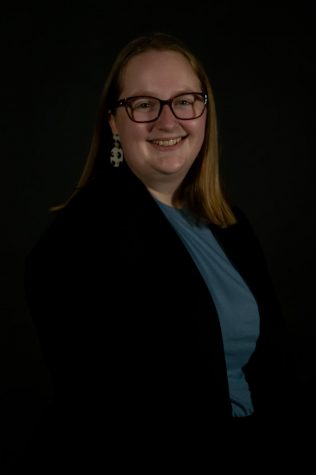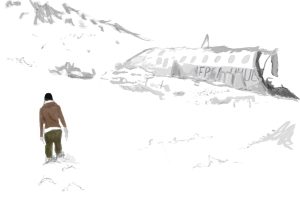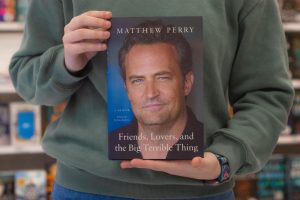Ecological lecture series hopes to ‘spark and engage’
March 31, 2021
From March 23 to April 21, Winona State University will host a number of speakers as part of the ecological history lecture series.
The project was made possible in part by the people of Minnesota through a grant funded by an appropriation to the Minnesota Historical Society from the Minnesota Arts and Cultural Heritage Fund. The grant also worked to fund a digitized, reconstructed map of Winona’s vegetative communities in history which can be found at https://storymaps.arcgis.com/.
To comply with COVID-19 guidelines, the speaker series originally planned for last spring was transitioned to webinar-style lectures hosted on Zoom.
Lectures are recorded and will be available to watch through the Open River website listed here https://openriver.winona.edu/ecologicalhistorylectureseries/.
Allison Quam, associate professor in the library department, worked to put on this series.
The execution of the series satisfies Quam’s role to help students learn effective research and critical thinking skills.
According to Quam, the transition to Zoom was made easier in part because of the speakers.
“All of the speakers were so gracious, flexible and supportive. I feel so lucky that this group of people is so passionate about what they’re talking about and that their empathy also runs deep,” Quam said.
The first speaker of the series was on Tuesday, March 23 at 6:30 p.m. with Diane Wilson.
Wilson is the current executive director for Native American Food Sovereignty Alliance (NAFSA) and former executive director for the Dream of Wild Health farm in Hugo, Minn.
Her presentation, titled “Seeds for Seven Generations,” focused on her involvement in seed week, a five-day celebration of Indigenous seeds through music, art, gardening and food.
Wilson spoke to the importance of oral traditions for Native Dakota and Ojibwe people, where the common theme was the answering of prayers with corn.
The gratitude of the Native people for the gift also illustrated the life-giving properties of these seeds and how the seeds connect people to their Earth.
Wilson also expanded on the idea of Indigenous people as they used seeds to develop more modern pharmacology with traditional, practical knowledge for survival.
Robin DeVinney, a professor in the biology department and director of the Winona State greenhouse, spoke to her experience with Wilson’s lecture topic.
“The benefits [of having this speaker series] are immeasurable. These lecture series make us a part of the bigger world,” DeVinney said.
As greenhouse director, DeVinney also mentioned the fun she has overseeing the university’s four composters, the SEED garden and SEED library, which she says are “nationally important.”
The SEED bank, housed at the university, helps to keep a genetic and historical record of seeds, according to DeVinney.
The second speaker in the series was Michael Lee who spoke on Wednesday, March 24 at 6:30 p.m.
His lecture was titled “Minnesota’s Driftless Area: A Biodiversity Hotspot.”
He earned B.S. and M.A. degrees in Wildlife Biology from St. Cloud State University and has worked at the Minnesota Department of Natural Resources since 1991, participating in the Minnesota Biological Survey since 1992.
During that time, Lee has logged thousands of miles afoot cataloging the flora throughout most regions of the state, including swaths of Winona, Wabasha, Fillmore and Houston counties.
Lee’s lecture focused on the ecological classification system (ECS) within the Driftless region, also known as the Paleozoic plateau and extends 20,000 square miles between four states.
Within the ECS, there are subsections which include bedrock, topographic relief and surficial geology.
Lee worked to explore how the region’s topography affects flora, fauna and surrounding land.
According to Lee, there are more than 1,800 rare plant records in the Paleozoic plateau zone.
His talk also covered native plant community settings, including but not limited to ridge tops, mesic oak savannas and narrow bottomlands.
Lee expanded on these topics, highlighting threats that have and continue to be made in these ecological regions like rural and urban development, invasive plant growth and natural erosion.
As an environmental geoscience major, fourth-year student and president of geology club Ryan Taitano spoke to his academic track and how it relates to the lectures at hand.
Part of Taitano’s involvement in the geology club is working to engage with the community in volunteer clean-up efforts.
“Although this is my first time hearing about this [lecture series], I do want to check it out,” Taitano said. “It’s good for people to be informed. Some people are very curious and would never think about stuff like this.”
Taitano said the series could encourage curious individuals to learn more about their ecosystems and their unique histories.
For Quam, the overall mission of the university is to provide people, like Taitano, the opportunity to help “spark and engage people with questions and topics and be supportive of education.”
The next event in the series, “Mapping Ecological History in the Driftless Area of Minnesota,” will feature Andy Robertson, current Executive Director of GeoSpatial Services at Saint Mary’s University of Minnesota and will occur virtually on April 6 at 6:30 p.m.
For more events, please view the schedule at https://openriver.winona.edu/ecologicalhistorylectureseries/schedule.pdf. c


































